Truckstop Go
Supercharging America's carrier fleet with a mobile-first CX to haul loads better, faster, and smarter.
Trucking is the lifeblood of moving goods in North America that supply businesses and service consumers with readily-available products. Nearly 400,000 long distance owner-operators in the US rely on today's digital ecosystem to help them find loads to haul, strategize optimal routes, and manage their independent business.
While Truckstop operates within the technology landscape to service O/O's with their suite of products, their legacy CX struggled to support mobile users. Drivers spend 80-90% of their time on the road, and are not shy to demand a seamless experience that enables them to prioritize more time trucking over looking at a screen.
I was brought on to support the post-launch of Truckstop Go as an embedded product designer during my time at Cognizant. I led research, design, and architecture of several product experiences hosted on the mobile platform.
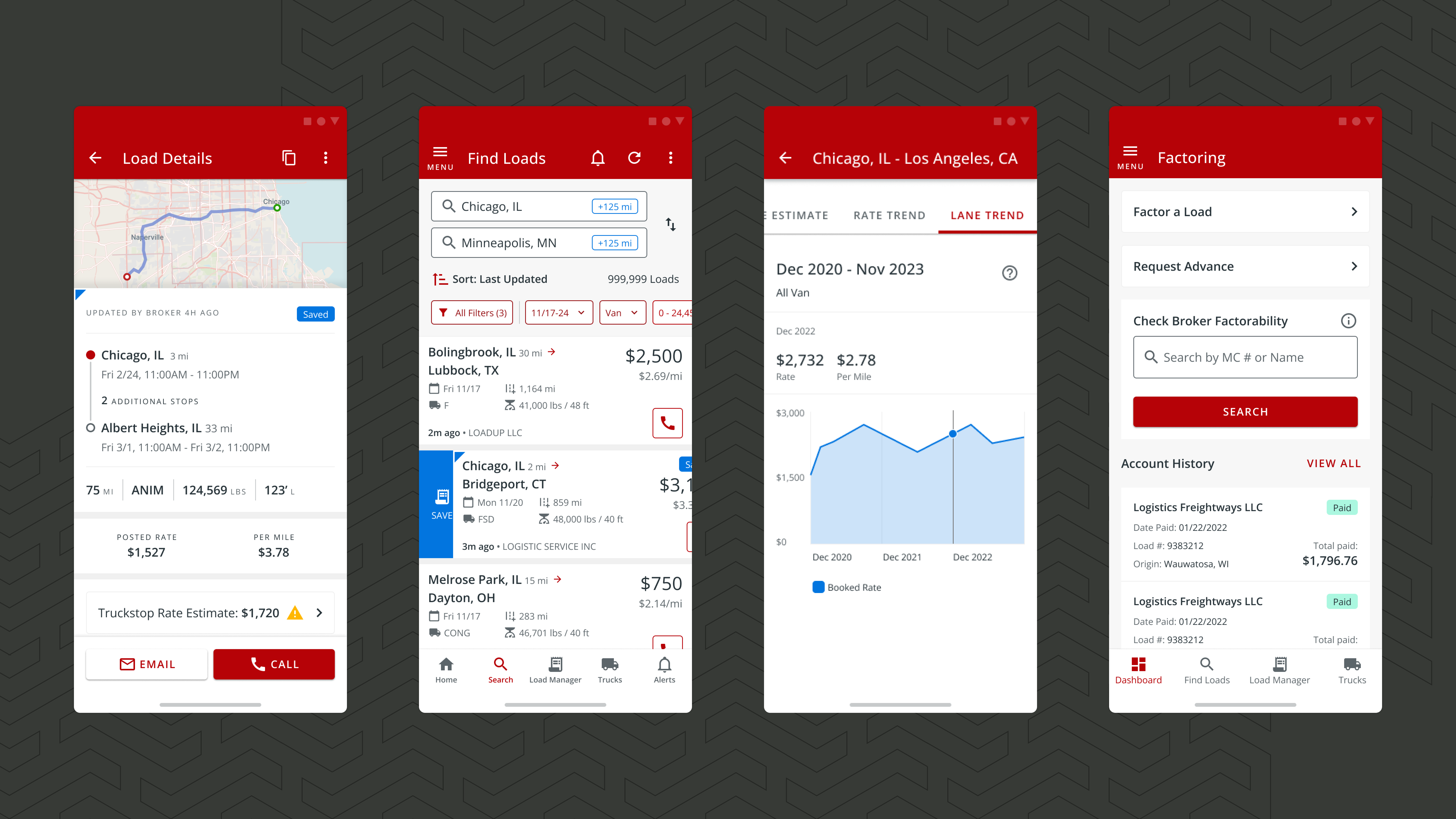
Translating angry O/O feedback into a determined product strategy
When I joined Truckstop Go post-launch, an abundant supply of feedback already existed through support channels, emails, and App Store reviews. Our design team focused on the challenges that drivers were particularly vocal about - they aren't particular about technical details, but rather care about the outcomes they can achieve with the app and the overall value of their Truckstop subscription.
With a clear understanding of our user base, business imperatives, and aligned vision, myself along with my fellow product manager facilitated a workshop series with Truckstop to create a product strategy. This strategy strove to achieve one core goal: create an middle ground for the mobile platform, that defines delivery while evaluating mission alignment.



Quick wins to optimize user journeys
As delegates of the mobile platform, the UX and product teams for Truckstop Go were often burdened with translating desktop requirements into a reliable experience for mobile users. This required multiple unique exercises to ideate on designs that retained product asks without compromising usability.
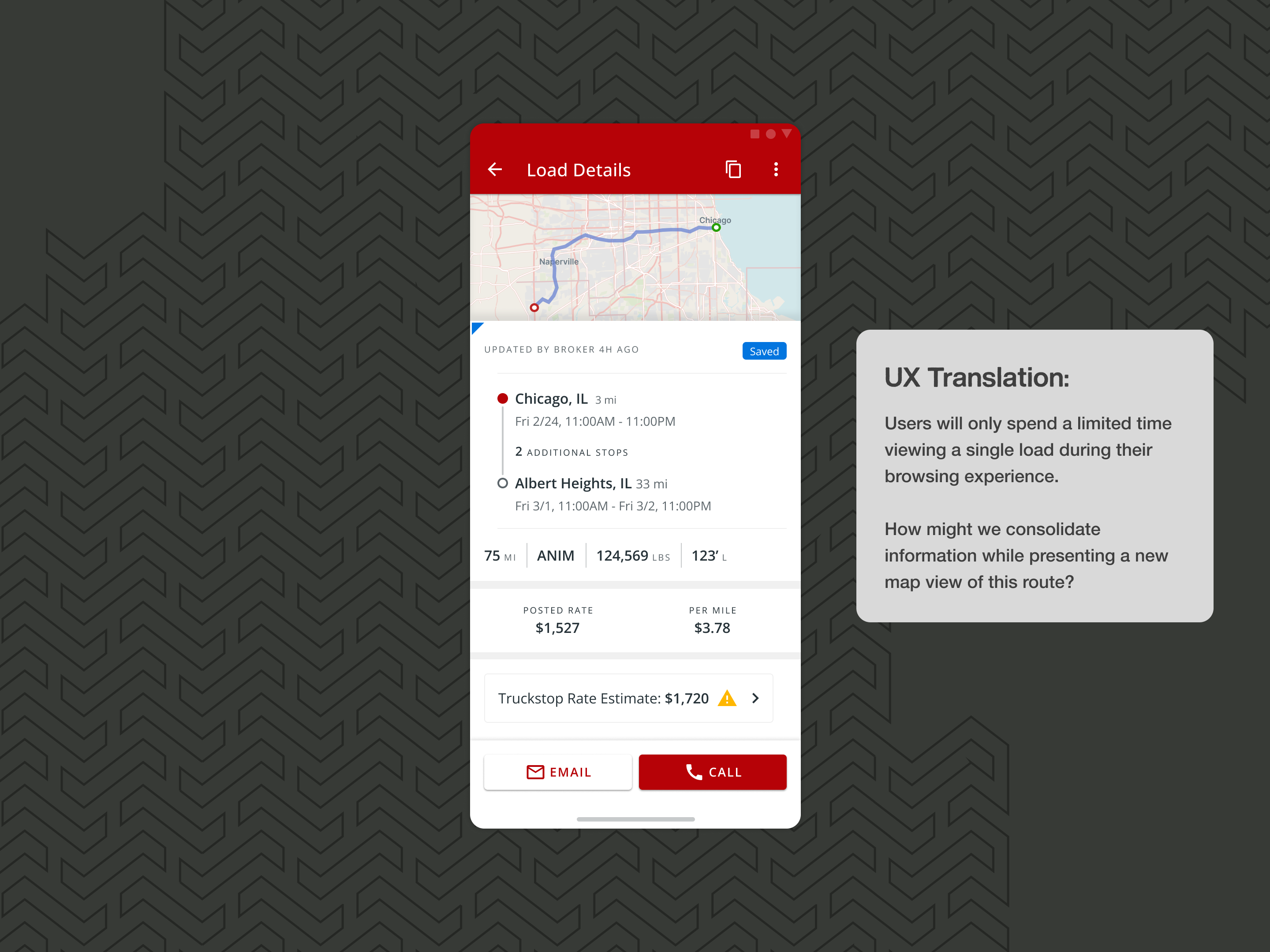
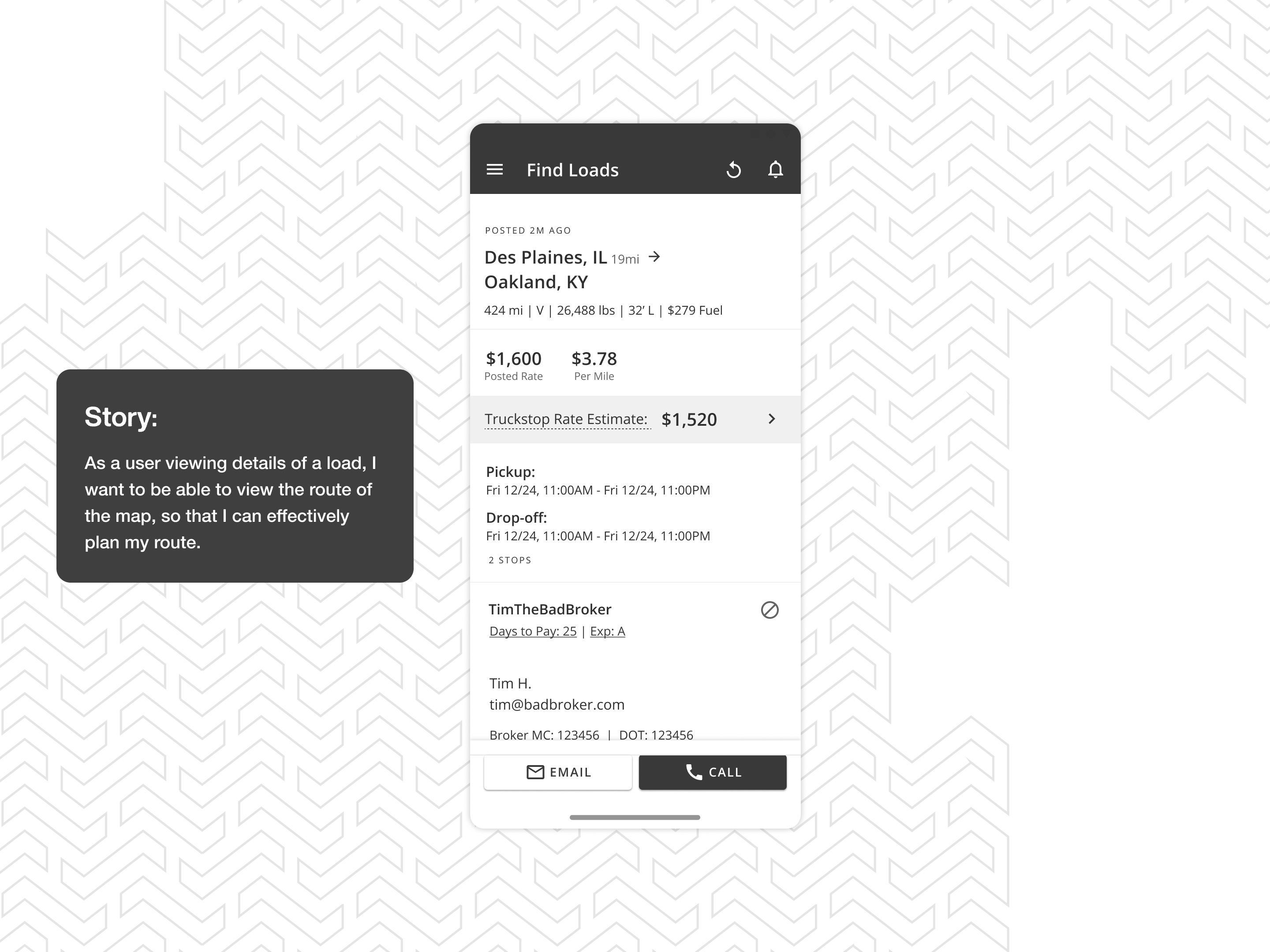
Transforming a pattern library to support new experiences
I initially inherited a rushed library of tokens and components that I could barely support through long periods of product delivery. When time came to explore a dark mode implementation, I was determined to give more life to the existing specifications, so that design, engineering, and product teams utilizing the library could quickly understand guidances on using the Material-based patterns.
While Material Design isn't considered conventionally "sexy" within today's design standards, it is a functional look and familiar feel for Truckstop customers who advocate against change. Using this constraint to my advantage, I rebuilt our library with aligned documentation, clear specifications, and dev-ready technologies available via Figma.





The result was an expansive library that unlocked dark mode toggling, which was a particularly important release for the application - drivers left feedback asking for a darker UI option when accessing the app during nighttime drives so they wouldn't be blined by a white background (while we don't condone using a phone while driving, we recognized the need to minimize distractions and help prevent accidents for those who do).
The library has also paved the way to democratize design governance across other platforms (web, wearables, XR) and begin the process of merging interaction use cases into a shared design system.
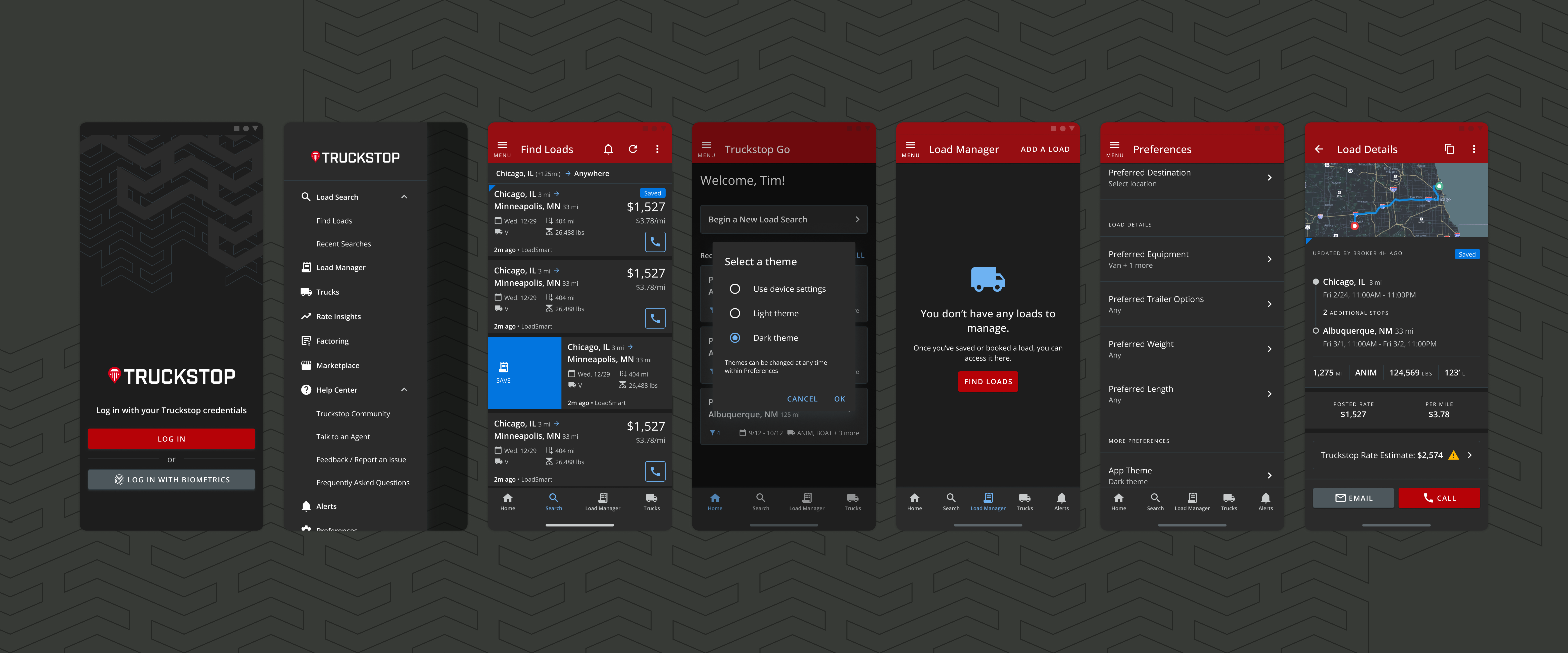
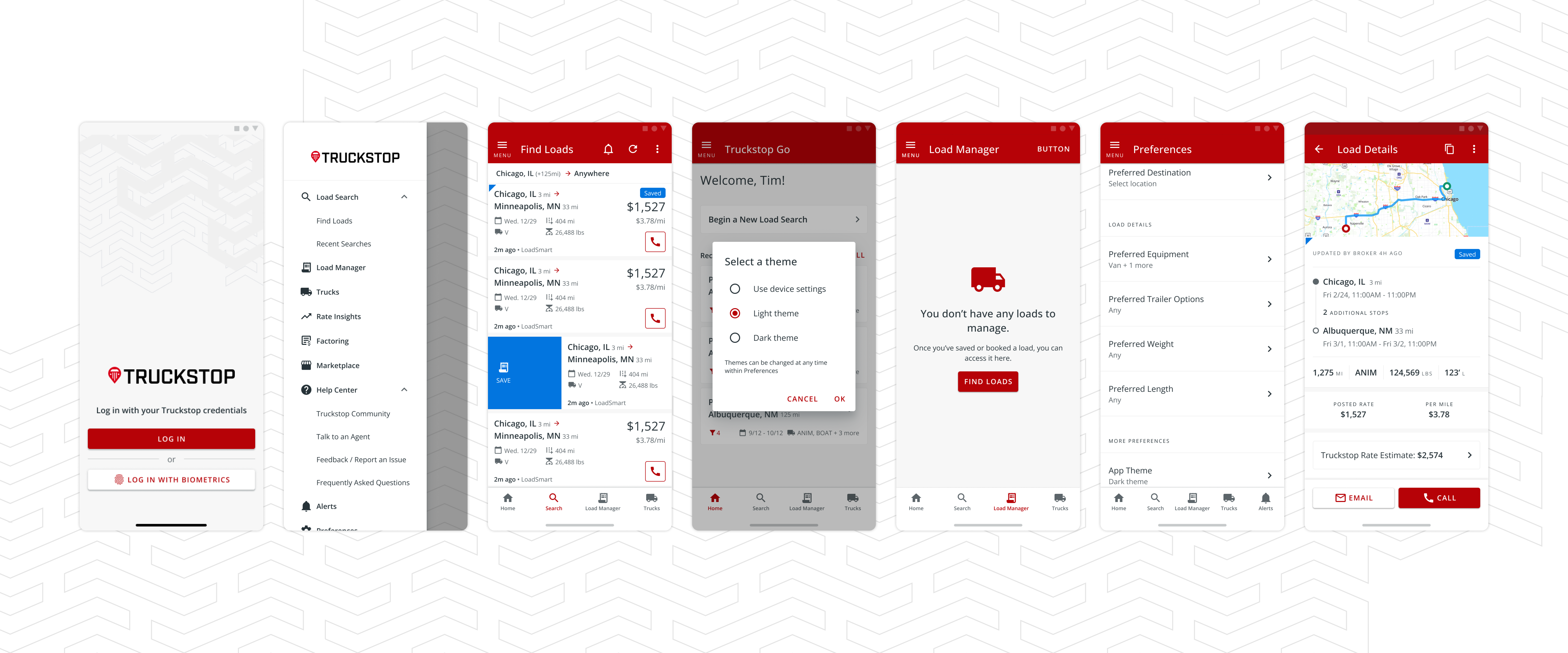
Shepherding products for a platform-oriented vision
When a trucker-first business suite wants to rapidly deploy functionality that helps its customers, it will orient itself around mission alignment and key strategic initiatives to deliver. My team was critically involved in outlining certain mobile capabilities and constraints that would impact delivery and launch timelines.
I was more than "just a designer" during my time at Truckstop Go, digging my head into conversations on front-end implementation, product planning, architecture, security, platform strategy, and marketing to ensure that Truckstop Go kept its momentum post-launch and remained the platform that O/O's go to for managing their trucking business.




